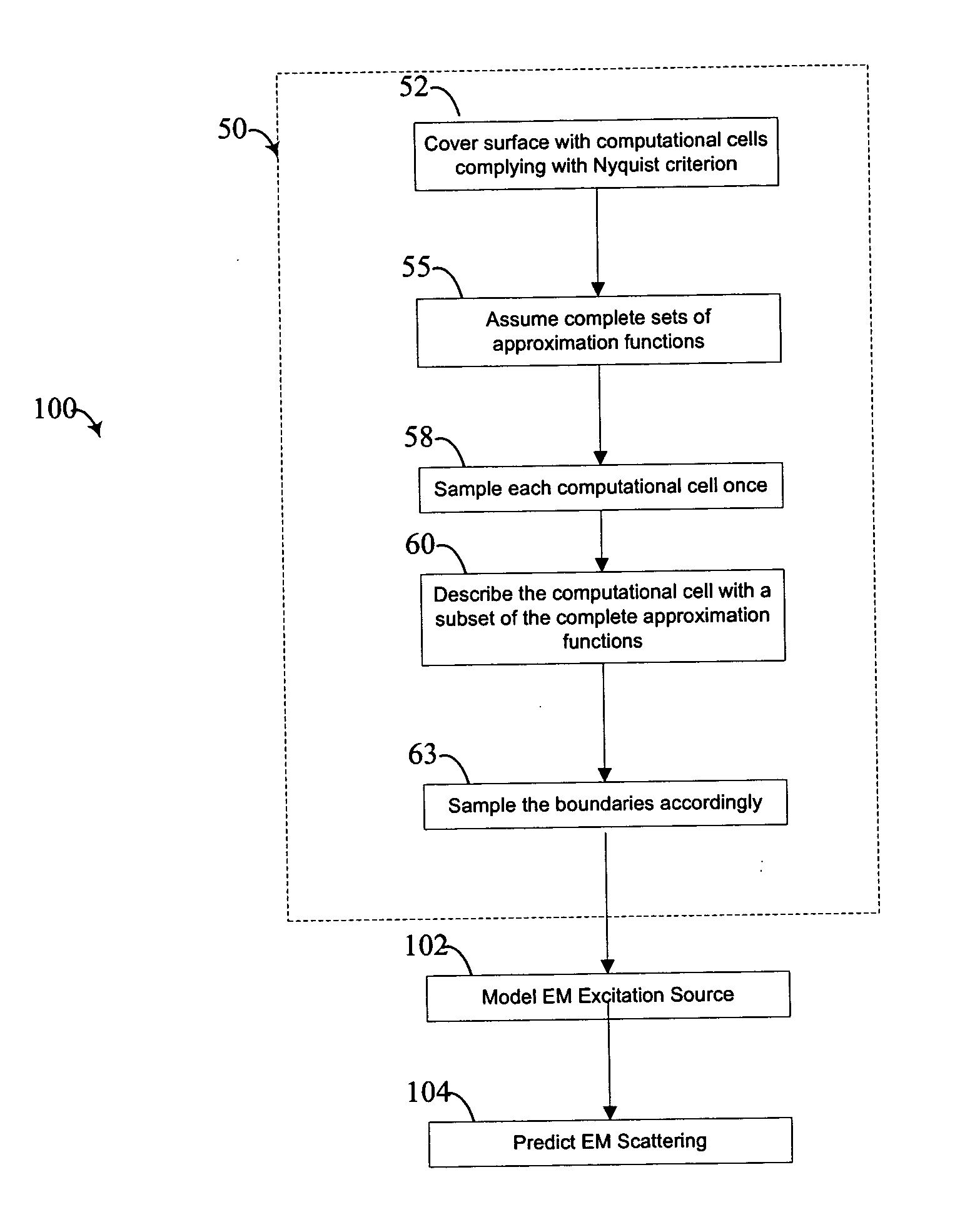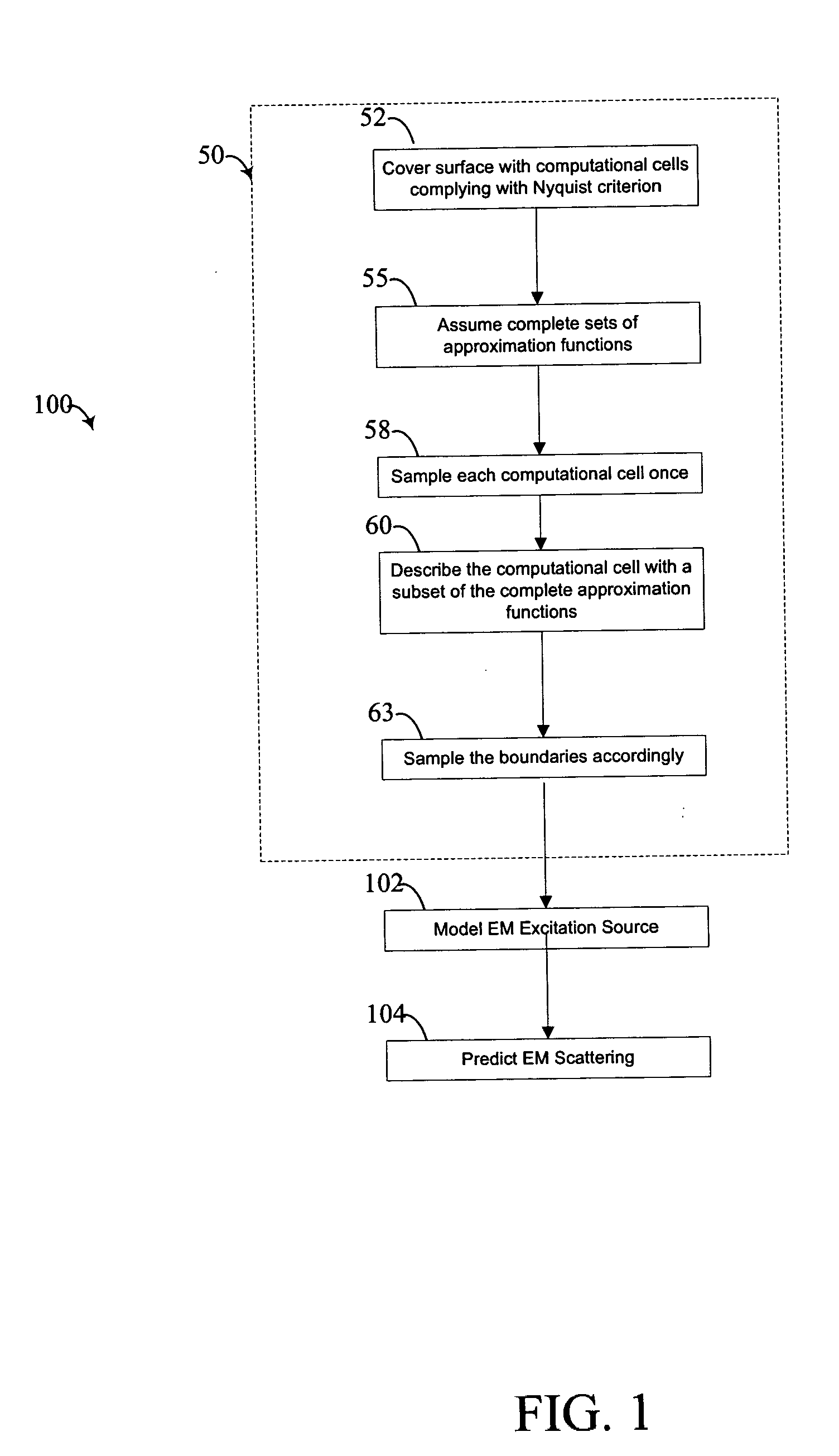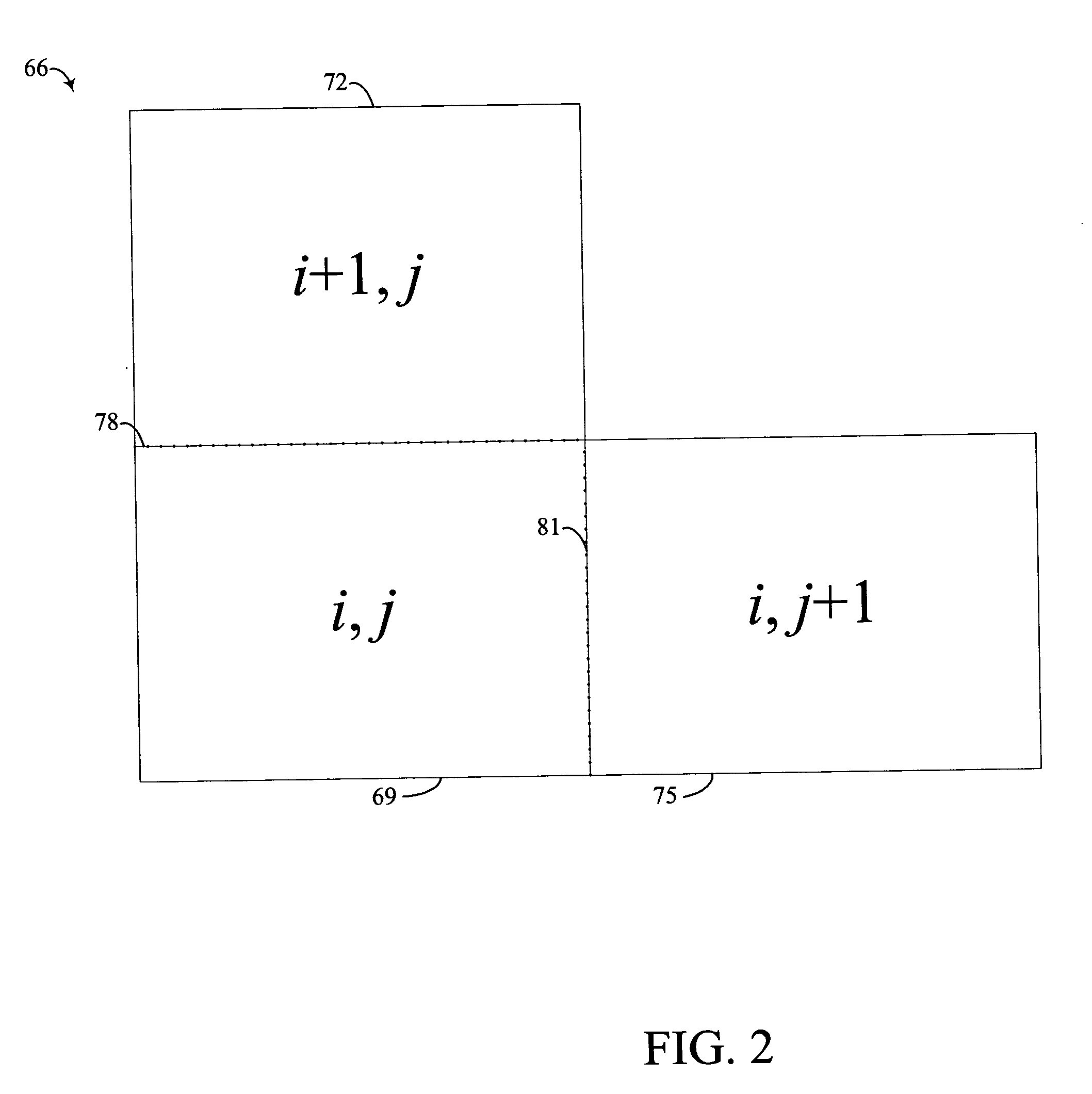Methods and systems for predicting electromagnetic scattering
a technology of electromagnetic scattering and electromagnetic waves, applied in the field of automatic electromagnetic scattering prediction, can solve the problems of difficult to formulate the appropriate ie for geometrically complex inhomogeneous structures, cost and time, and inability to accurately predict the effect of electromagnetic scattering, so as to reduce computational effort and reduce the cost and time required, the effect of improving the efficiency of the prediction process
- Summary
- Abstract
- Description
- Claims
- Application Information
AI Technical Summary
Benefits of technology
Problems solved by technology
Method used
Image
Examples
Embodiment Construction
The present invention relates to methods and systems for methods and systems for predicting electromagnetic scattering. Many specific details of certain embodiments of the invention are set forth in the following description and in FIGS. 1-9 to provide a thorough understanding of such embodiments. One skilled in the art, however, will understand that the present invention may have additional embodiments, or that the present invention may be practiced without several of the details described in the following description.
As described more fully below, embodiments of methods and systems in accordance with the present invention incorporate Kirchhoff's First Law into the analytical modeling of a scatterer to provide a simplified analytical model of the scatterer compared with prior art methods. Such embodiments may thereby reduce the description of scattering from an analytic surface to a computation derived by (1) covering the surface with computational cells that comply with Nyquist...
PUM
 Login to View More
Login to View More Abstract
Description
Claims
Application Information
 Login to View More
Login to View More - R&D
- Intellectual Property
- Life Sciences
- Materials
- Tech Scout
- Unparalleled Data Quality
- Higher Quality Content
- 60% Fewer Hallucinations
Browse by: Latest US Patents, China's latest patents, Technical Efficacy Thesaurus, Application Domain, Technology Topic, Popular Technical Reports.
© 2025 PatSnap. All rights reserved.Legal|Privacy policy|Modern Slavery Act Transparency Statement|Sitemap|About US| Contact US: help@patsnap.com



